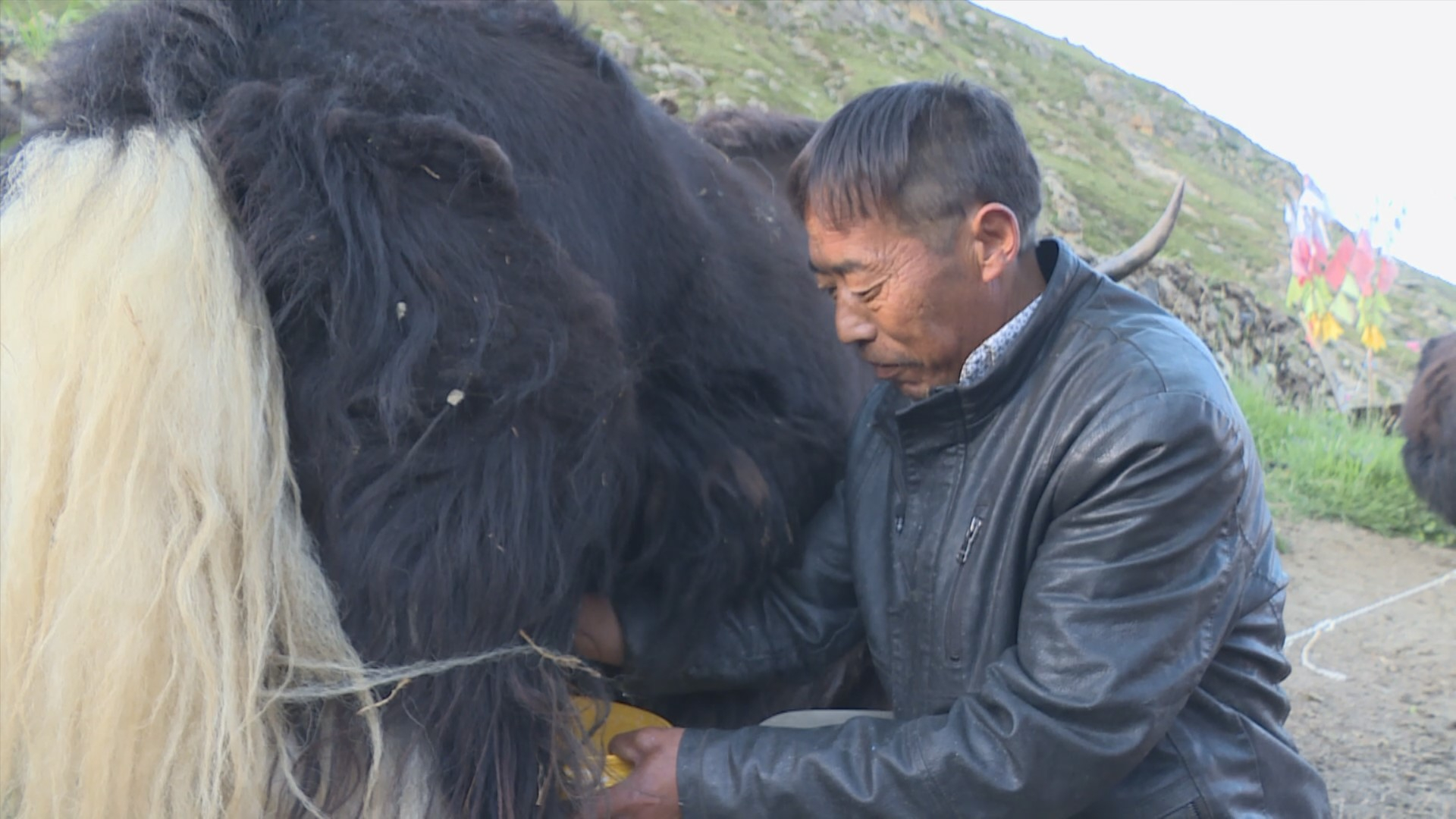

The Shoton Festival in Lhasa is one of the grandest and largest celebrations in the Tibetan Autonomous Region, only second to the Tibetan New Year. “Shoton,” means "yogurt banquet festival.” It is often held from July 1 to 7 in the Tibetan calendar. This year, the seven-day celebration is from August 30 to September 5 in the Gregorian calendar.
We went to Lhasa to witness how the locals celebrate this festival, and here are some interesting details of the traditional Tibetan culture we’d like to share with you.
Buddha Shining Festival

Buddhists carry a huge thangka out of the Cuiqin Main Hall. /CGTN Photo
Thie festival started on August 30 with the annual ceremony of “shining the Buddha Thangka.” Huge thangka paintings bearing the image of Buddha would be displayed on the hillsides near the Drepung and Sera monasteries.
We chose the Drepung monastery because the ritual there is larger in scale. The event drew hundreds of thousands of people, including locals and visitors. Many set off towards the hilltop at midnight. Our group went uphill at about 3 o’clock in the morning. It was still in pitch black when we entered the Cuoqin Main Hall of the Drepung monastery, where the huge Thangka was stored.

The Jumba Thangka. /CGTN Photo
The figure displayed this year is called “Jamba,” or Maitreya, symbolizing amiability and kindness.
The whole painting is about 40 meters wide and 42 meters high. It should have been carried out from the temple by Buddhists at sunrise. But as it was a little rainy that day, the ritual was rescheduled to start at about 8:20 a.m.
Many locals helped with carrying and placing the thangka on the exhibition platform on the hilltop.
The huge painting was slowly unrolled at around 9 a.m. People rushed to the platform in excitement and admiration, throwing hadas at the figure.
After the ceremony, people crowded along the corridor by the foot of the hill, ready to receive the Buddhists’ “touching head” blessing, which involves gently hitting people on the head with a rolling golden cloth. I also lined up in the queue and was very happy to be hit. Good luck for a whole year, who doesn’t want it?

Children enjoy traditional Tibetan yak yogurt. /CGTN Photo
A traveler from Henan said his family got up at 3 a.m. just to see the grand event. Meanwhile, the faithfulness of the locals who came out despite the chilly weather touched another traveler from Sichuan.
Having Lingka in Norbulingka Park
Having “Lingka” is another important activity that many Tibetans will do during the seven-day holiday. The locals always have it in Norbulingka Park, which means the “treasure gardens.” The park was originally built in the 1840s and now acts as an open park and museum. People were sitting on the lawns with their family or friends, picnicking and tasting traditional Tibetan food.
As a main venue for the Shoton Festival, Norbulingka hosts the Tibetan Opera shows. Dozens of elite Tibetan Opera troupes from around the autonomous region perform eight classical pieces in the open-air theater during the holiday. We followed the rehearsal of a troupe from Gongga County of Shannan City before its final show on September 2. All 25 of its members are peasants who use their spare time to rehearse and perform.

The troupe’s leader Yonten Samdrup during an interview with CGTN. /CGTN Photo
“Tongdong Gyibo, the founder of Tibetan Opera, created the blue mask 600 years ago, and then set a position in every troupe to discipline those who violate the rules,” said leader Yonten Samdrup.
The Tibetan Opera was included in UNESCO’s first batch of intangible cultural heritage list in 2006, with featured elements like singing, dancing and acrobatics. Yonten Samdrup has been practicing and performing for almost 40 years. He hopes to recruit more members in the future and pass on this culture to more young Tibetans.
Actress Pema performed in the Tibetan Opera troupe in her spare time. She has loved singing and dancing since childhood. Although she tends to avoid our lens during the interview, she is animated and cheerful during the show in Norbulingka. More than 150 such troupes in Tibet symbolize not only a tradition but also a deep love for their culture.
Traditional Tibetan yak yogurt

Herdsman Pasang Tsring milks his yak. /CGTN Photo
The Lhasa locals have a tradition of having yak yogurt. During the Shoton Festival, their need is more. This popular snack is now even favored by visitors at home and abroad.
We visited herdsman Pasang Tsring’s family in Duodi County, northeast of Lhasa city in the early morning. He was milking dozens of yaks in the pasture when we arrived. Yak milk provides the only ingredient for making traditional Tibetan yogurt. The fresh milk needs to be boiled and cooled to a proper temperature.
A Tibetan woman scooped several spoons of jelly-like yogurt into small barrels, poured the cooled milk in and fermented it for about five hours. Then this semi-finished product will be sent to yogurt shops and reprocessed for a treat to people during the Shoton Festival.

A woman scoops several spoons of jelly-like yogurt into small barrels. /CGTN Photo
Kelang runs such a shop in Lhasa. The traditional yak yogurt tends to taste too sour. To attract younger customers and visitors, she developed different flavors by adding rose petals, ice cream, honey, red dates, and other treats.
“We won’t change the yogurt’s original flavor, these additives only made the taste richer and fragrant,” she said.
In Norbulingka, a German couple told us that they love the taste of Tibetan yogurt but still needed a sweeter version.
The Shoton Festival, coming from the yak yogurt, is having more connotations and attracting more eyes.

Copyright © 2018 CGTN. Beijing ICP prepared NO.16065310-3
Copyright © 2018 CGTN. Beijing ICP prepared NO.16065310-3